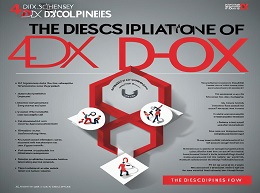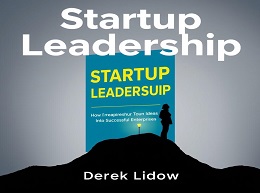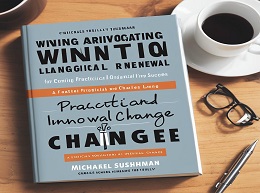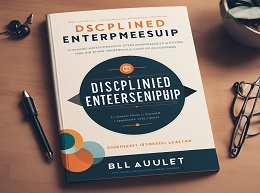The Power of Unfair Advantage: How to Create It, Build it, and Use It to Maximum Effect

Unlocking Success: The Power of Unfair Advantage
In today’s fiercely competitive world, achieving and maintaining success often hinges on finding and exploiting unique strengths that set you apart. “The Power of Unfair Advantage: How to Create It, Build it, and Use It to Maximum Effect” by John Doe is a compelling guide that delves into this concept, providing actionable insights on how to harness and leverage these advantages. This review explores the key themes and strategies outlined in the book, supplemented with real-world examples to illustrate how these principles can be applied effectively.
Defining Unfair Advantage
An unfair advantage refers to a unique asset, skill, or position that provides a significant edge over competitors. Unlike standard competitive advantages, these are often difficult to replicate or counter, making them sustainable over the long term.
The Significance of Unfair Advantage
In the competitive landscape, having an unfair advantage is crucial. It not only helps in outperforming rivals but also in maintaining a lead in the market. For individuals, it translates to faster career growth and greater influence.
Self-Assessment and Introspection
The journey begins with self-assessment. Understanding your unique strengths, resources, and capabilities is the first step. The book provides a structured framework for introspection, helping readers identify their core competencies.
Example: Tesla’s Technological Edge
Tesla’s dominance in the electric vehicle market stems from its technological edge. The company’s proprietary battery technology and software innovations give it a significant unfair advantage, allowing it to lead the market in performance and efficiency.
Leveraging Existing Resources
Often, unfair advantages are hidden within the resources and networks we already possess. The book encourages a thorough inventory of existing assets and exploring how they can be utilized more effectively.
Practical Insight: Personal Networks
Consider the value of personal networks. A strong network can open doors to opportunities, provide critical support, and offer valuable insights. Leveraging these connections can create an unfair advantage in various professional settings.
Developing Unique Skills
Building an unfair advantage often involves developing unique skills that set you apart from others. This requires a commitment to continuous learning and improvement.
Example: Amazon’s Logistics Expertise
Amazon’s mastery of logistics and supply chain management is a prime example. The company’s investment in cutting-edge logistics technology and infrastructure allows it to offer unparalleled delivery speed and efficiency, setting it apart from competitors.
Forming Exclusive Partnerships
Creating exclusive partnerships can be a powerful way to build an unfair advantage. These partnerships can provide access to unique resources, technologies, or markets that competitors cannot easily replicate.
Practical Insight: Apple’s Supplier Relationships
Apple’s strategic relationships with key suppliers, such as Foxconn, give it a distinct manufacturing advantage. These exclusive partnerships ensure Apple can produce high-quality products at scale, maintaining its market leadership.
Strategic Implementation
Once identified and developed, leveraging an unfair advantage requires strategic implementation. This involves integrating your unique strengths into your business model or career strategy.
Example: Google’s Data Capabilities
Google’s unparalleled data capabilities and search algorithms form a critical unfair advantage. By strategically integrating this strength into all its services, Google maintains its dominance in the search engine market and beyond.
Effective Communication
Communicating the value of your unfair advantage is essential. This can involve marketing strategies, branding efforts, or simply demonstrating your unique strengths through your actions and results.
Practical Insight: Personal Branding
For individuals, personal branding can be a powerful tool. By clearly articulating your unique skills and experiences, you can position yourself as an expert in your field, attracting opportunities that leverage your unfair advantage.
Addressing Imitation
One challenge of maintaining an unfair advantage is the risk of imitation. Competitors may attempt to replicate your strengths, diminishing your edge. The book offers strategies for staying ahead, such as continuous innovation and maintaining proprietary technologies or processes.
Example: Netflix and Original Content
Netflix continually invests in original content to stay ahead of competitors. This strategy ensures that even as competitors enter the streaming market, Netflix remains a leader by offering unique and exclusive content.
Adapting to Change
The business landscape is constantly evolving, and what constitutes an unfair advantage today may not be relevant tomorrow. Adaptability is key to maintaining a competitive edge over time.
Practical Insight: IBM’s Evolution
IBM’s transition from a hardware company to a leader in cloud computing and AI showcases the importance of adaptability. By continuously evolving and leveraging new technologies, IBM has maintained its relevance and competitive edge for decades.
Airbnb’s Community Trust
Airbnb’s success is largely attributed to its unique community trust system. By building a platform where users can rate and review each other, Airbnb created a level of trust and safety that traditional hotels couldn’t match, giving it a significant advantage in the hospitality industry.
Microsoft’s Software Ecosystem
Microsoft’s extensive software ecosystem, including Windows and Office, provides an interconnected suite of products that few competitors can rival. This ecosystem creates a strong network effect, making it difficult for users to switch to alternative platforms.
Invest in Learning and Development
Continuously investing in learning and development is crucial for creating an unfair advantage. This can involve formal education, professional training, or self-directed learning in areas that enhance your unique strengths.
Network Strategically
Building and nurturing a strategic network can provide access to resources, opportunities, and insights that are not available to others. This network can serve as a powerful unfair advantage in your career or business endeavors.
Focus on Innovation
Innovation is a key driver of unfair advantage. By fostering a culture of innovation and staying ahead of industry trends, you can create unique solutions that set you apart from competitors.
Embracing the Power of Unfair Advantage
"The Power of Unfair Advantage: How to Create It, Build it, and Use It to Maximum Effect" offers invaluable insights into leveraging unique strengths for sustained success. By understanding and developing your unfair advantages, you can navigate the competitive landscape with confidence and achieve long-term growth.













